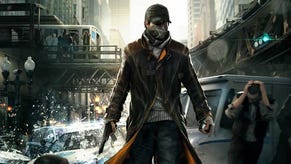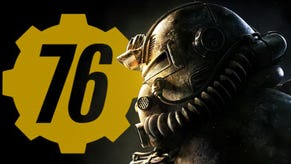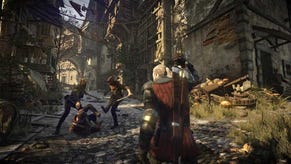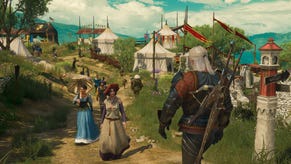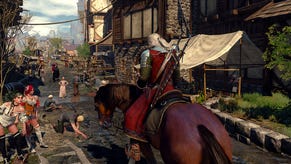Assassin's Creed 4 guide - beginner's tips
Just picked up AC4? These tips are a great way to kick your looting and pillaging into high gear!
Guard Alert Status
One of the most common things you'll come across as you play through AC4 is the need to avoid guards as often as possible. While you're just moving around town it's not a big deal, but if you enter a restricted area, it's safer and sometimes required to avoid the attention of the guards.
There are two different alert types. When you hear the alert noise, a yellow or red marker appears over the alerted guard's head. If the marker is yellow, the guard thought he saw or heard something, but if you escape his line of sight fast enough, he'll quickly go back to his normal duties, ignoring what he just saw or heard.
If the marker is red, it means that the guard knows he saw or heard you, and will investigate further. In this situation, you need a hiding spot far enough from the guard that he won't be able to track you down before his alert status drops down to yellow, or you need to take him out before he alerts other guards around him.
You don't need to concern yourself with the yellow markers. You can hide behind a narrow pole as long as you're out of the guard's direct line of sight. If you see this alert status, don't think too much of it, just make sure you get out of sight before it shifts to a red alert. If you see the red alert marker, take out the alerted guard as quickly as possible. If you can finish the guard before he alerts others, you'll still be relatively safe.
Hiding
There are many occasions throughout Assassin's Creed IV in which you are required to hide. Luckily there are quite a few hiding spots around to make this a little easier. Tall grass, heavy vegetation, storage closets, stacks of hay and hay carts are the most obvious locations to hide. However, you can also blend in with the surrounding common folk.
Blending in with a crowd is especially useful if you're trying to tail a specific individual through town. Any time there are at least two people in close proximity, move close to them and Edward will turn grey. This indicates he's essentially hiding in the crowd and will not be detected until he moves away from the two common folk.
Whistling
During a memory, there are many instances in which you need to avoid detection while making it through a series of guards. This is where hiding and using the whistle tactic comes in handy. While in real life most people can hear a whistle from a decent distance, that's not the case in AC4. When Edward whistles, it has a very specific and very short range. You can use this to your advantage when multiple guards in the vicinity.
If there are two guards standing side-by-side, there isn't much you can do to get the attention of one and not the other. However, if they're moving individually, or aren't quite standing right next to one another, you can whistle to get the attention of one guard, take him down, then do the same for the next guard.
From your hiding place, stay as far back as possible and inch forward. Use a single whistle each time you move forward. It only takes one whistle to get the attention of a guard, but it takes a few seconds before the yellow marker appears over the guard's head. Watch his movements to know if he heard the whistle before the marker appears. He'll actively look around in a confusing manner if he heard your whistle.
Once you know the range of your whistle (which is roughly four character lengths), you can inch forward from a hidden area and whistle to individual guards in a spread out group. Again, ignore what your rational mind tells you about the distance a guard should hear your whistle. This is not real life and you can use the whistle like you would a sniper rifle... picking off one guard at a time, even if they're close to one another.
Synchronize
If you've played a previous Assassin's Creed game, you're probably already familiar with synchronizing points. However, if not, they're very important if you wish to reach 100 percent completion in the game. At various points on each map you'll find an icon that looks like an eagle. These represent synchronizing points, which are always located in a high place. Generally you can find synch points at the top of a building or a high post of some sort.
When you approach a sync point, a bird flies off to indicate you're at the right place. Move out onto the ledge and sync up. This not only gives you a nice view of the surrounding area, it also reveals a portion of the map and all of the locations and items within that section. Before you sync, you can walk right past a loot chest and it won't show up on your map. Once you've synced, you can look at the map and see every little item in the immediate area, including loot points, treasure maps, taverns, and other items of interest.
Fast Travel
As you progress through the game, you'll need to travel all over the oceanic region to get to mission start points, find special assassin contracts, and plunder the high seas. While you can sail there are travel speeds, it takes a considerable amount of time to sail from one side of the map to the other. To make things a little easier, you can "fast travel" to any town or fort you've already visited and synchronized with.
In many cases, your mission start point will not be a fast travel point. In this situation, find the mission start point on the map, then locate the nearest fast travel point and sail there instead. This will cut down your travel time tremendously in almost every instance. Of course, you'll want to take part in naval battles to earn money and loot on the way to your next destination, but there are times when you just want to start the next mission, and that's where fast travel really comes in handy.
Head back for the rest of our Assassin's Creed 4 guide.






